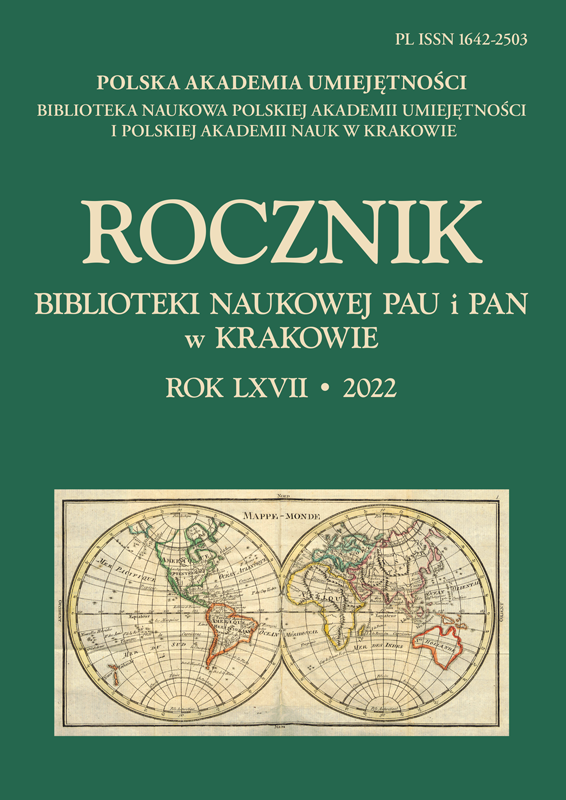La Pierre Eternelle ou soit La Glaura Augurelli Philosofi Angli. Tajemnice recepty w Księdze kabał królowej Sobieskiej w rękopisie 2284 Biblioteki Jagiellońskiej
La Pierre Eternelle ou soit la Glaura Augurelli Philosofi Angli. The mysteries of the recipe in The queen Sobieska’a Book of Kabballah, manuscript no. 2284 of the Jagiellonian Library
Author(s): Ewa Śnieżyńska-Stolot Subject(s): History, Museology & Heritage Studies, Library and Information Science, Archiving, Other, Source Material
Published by: Wydawnictwo Uniwersytetu Jagiellońskiego
Keywords: Maria Kazimiera Sobieska; the Philosophers’ Stone; Giovanni Aurelio Augurello; Lynceus; the Glaura nymph
Summary/Abstract: The article discusses one of the recipes included in manuscript no. 2284 held by the Jagiellonian Library (card 125r-126r), rewritten in French by Maria Kazimiera Sobieska. The manuscript contains various recipes including those gathered and rewritten by the queen widow herself while she was in Rome from 1699 to 1714. The title includes the words La Pierre Eternelle, that is the Philosopher‘s Stone, herafter Glaura Augurelli, which should be understood as the name of the Glaura nymph, a character in the poem titled Chrysopoeia by Giovanni Aurelio Augurello (1441–1524), an Italian poet, mistakenly called Philosofi Angli, due to Augurello’s popularity in this country. These last words were written in the language similar to Polish, which was common in Maria Kazimiera’s writings. The recipe contains a formula for the Philosopher’s Stone, which alchemists considered a means to obtain gold, but was also regarded as a remedy for all diseases. The Chrysopoeia poem describes the Philosopher’s Stone creation process, the mythological history of Lynceus, the participant in the quest for the Golden Fleece, and the Glaura nymph is another name for the Philosopher’s Stone. The discussed recipe, as well as the cabbalistic and numerological works gathered in the manuscript no. 2284 by Maria Kazimiera, contrary to popular opinion, presents her as a person deeply rooted in the elitist mindset of the turn of the 17th c. During her stay in Rome, she, like Krystyna Szwedzka, entered the circle of persons associated with studia humanitatis, and on the 16th September 1699 was admitted to the Accademia dell’Arcadia where she was renamed Amirisca Telea.
Journal: Rocznik Biblioteki Naukowej PAU i PAN
- Issue Year: 2022
- Issue No: 67
- Page Range: 47-56
- Page Count: 10
- Language: Polish

